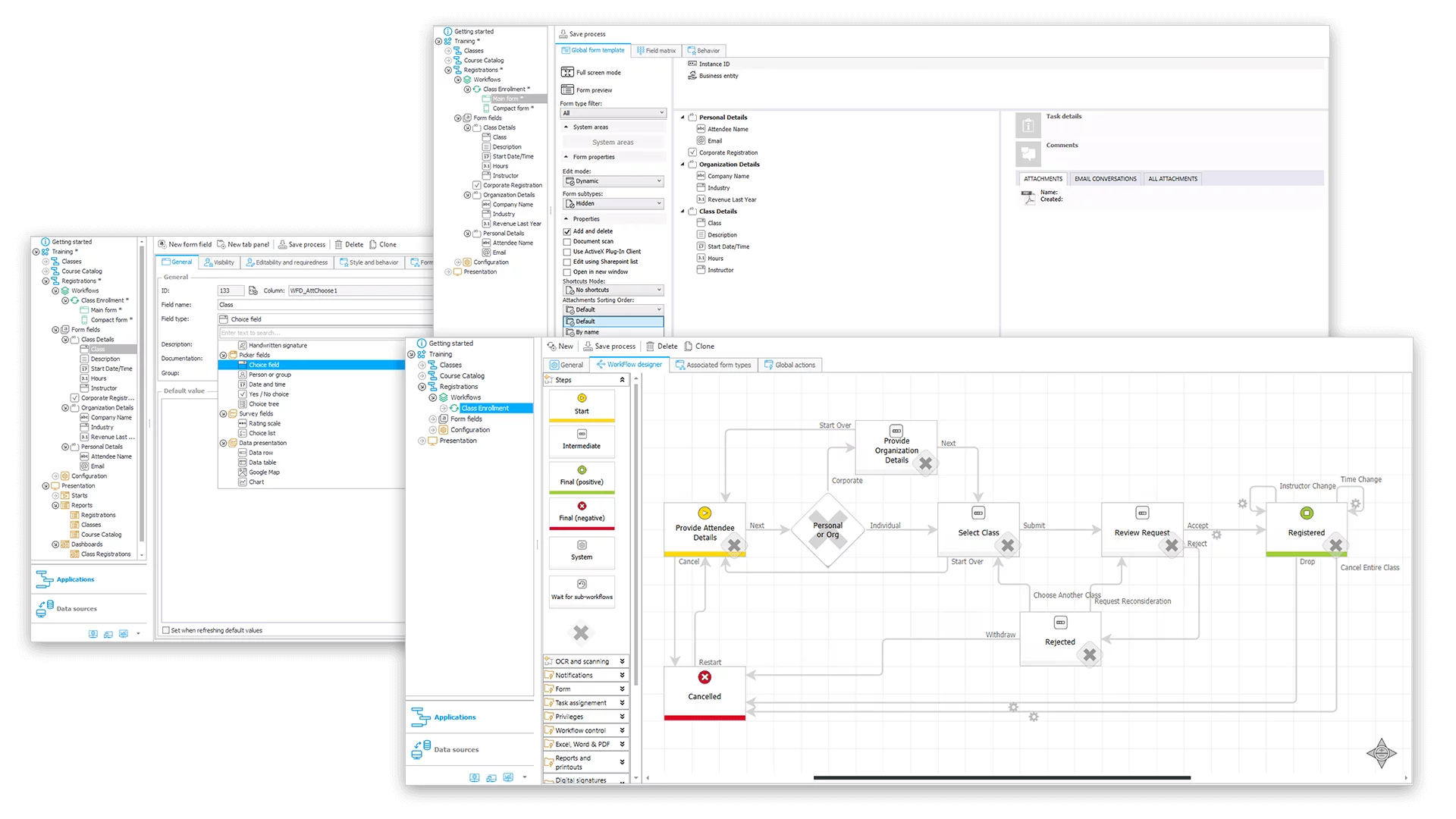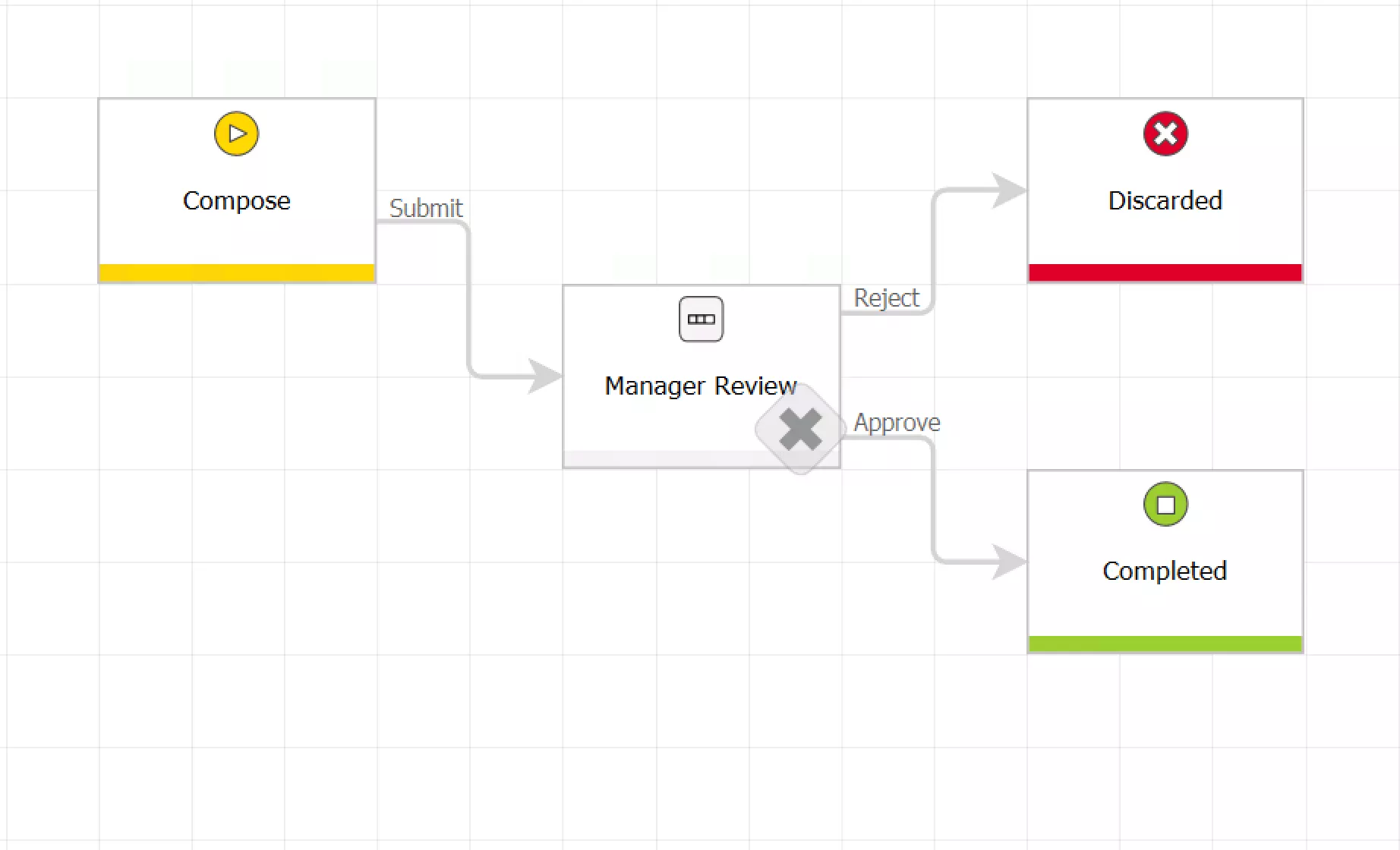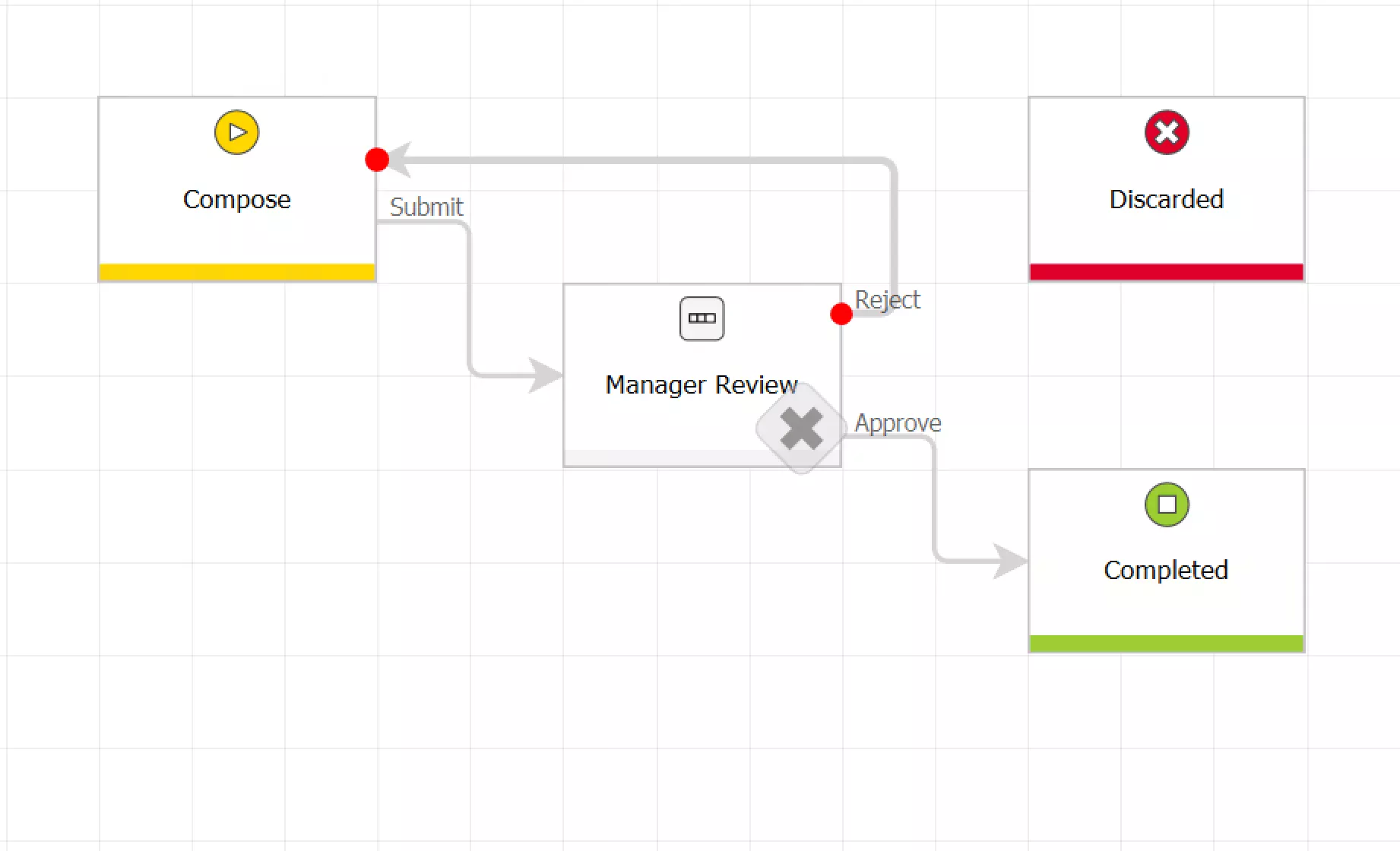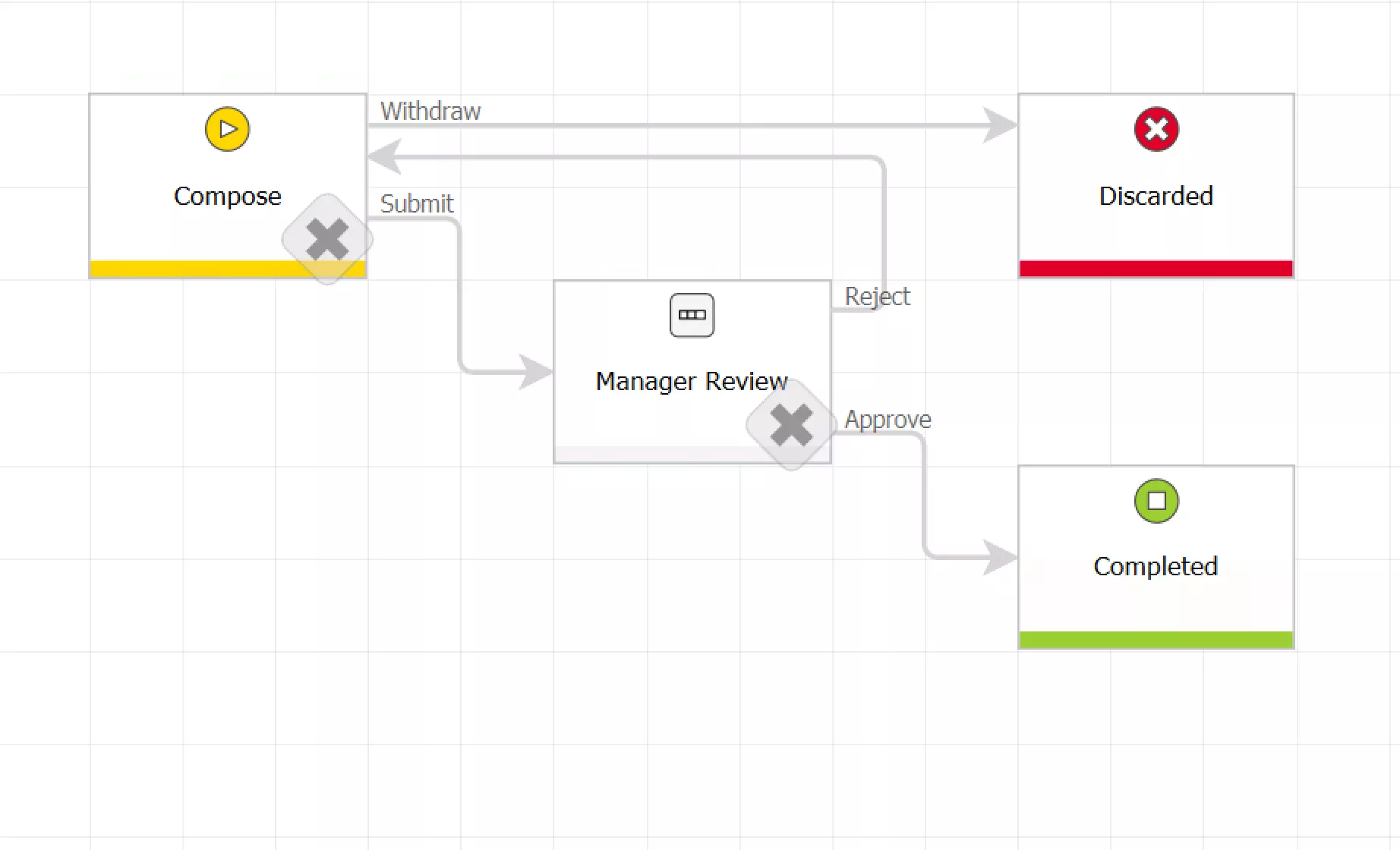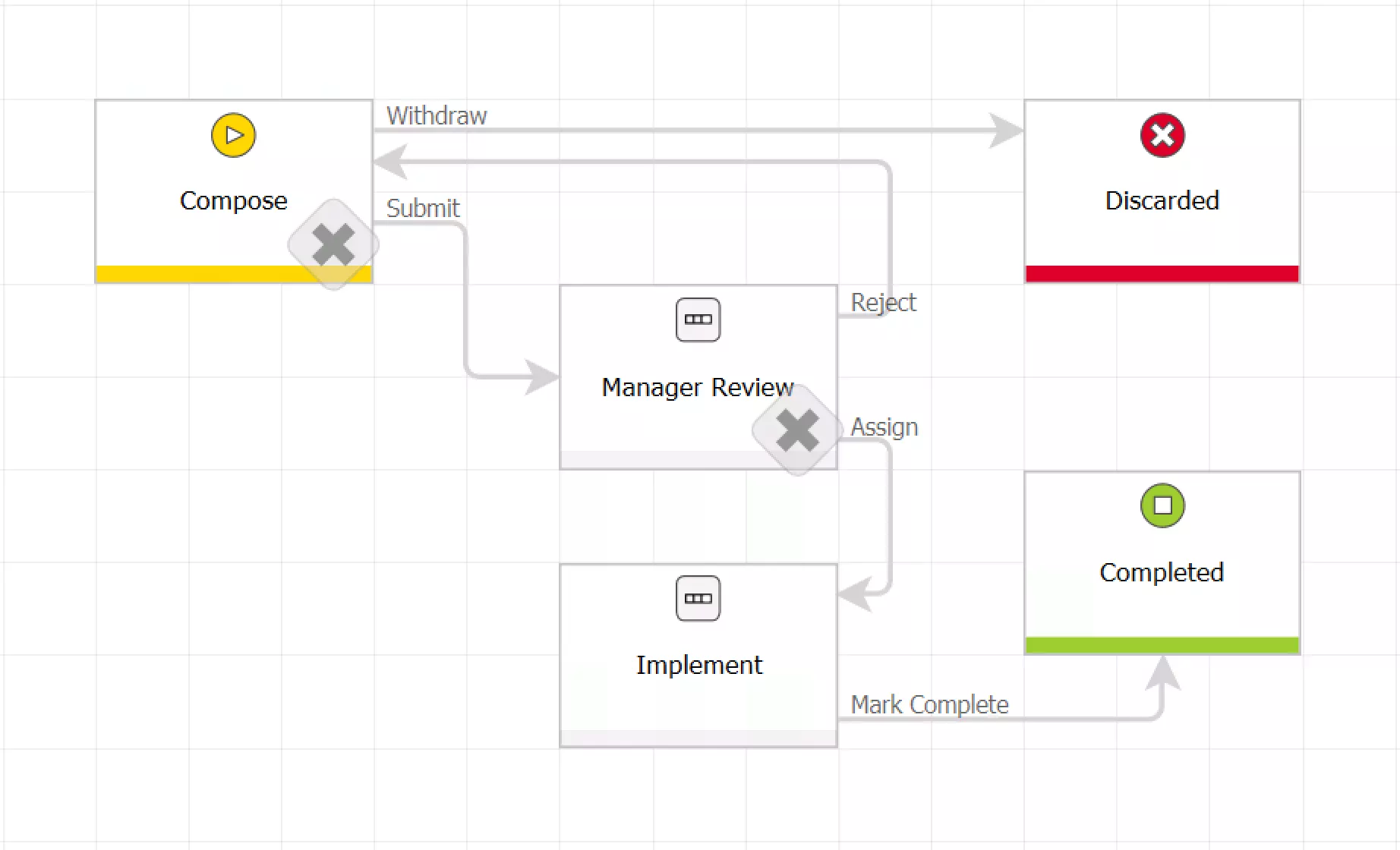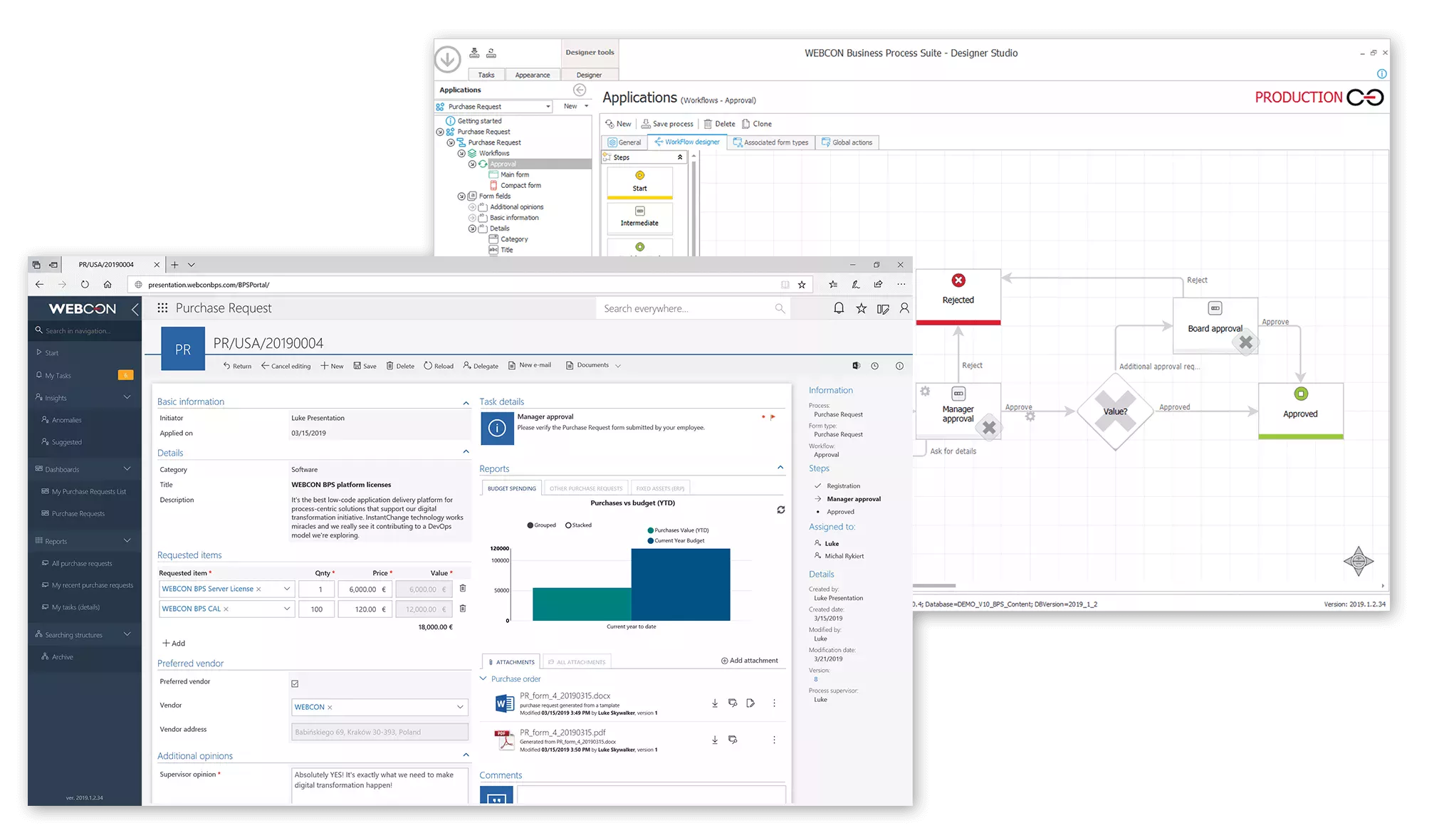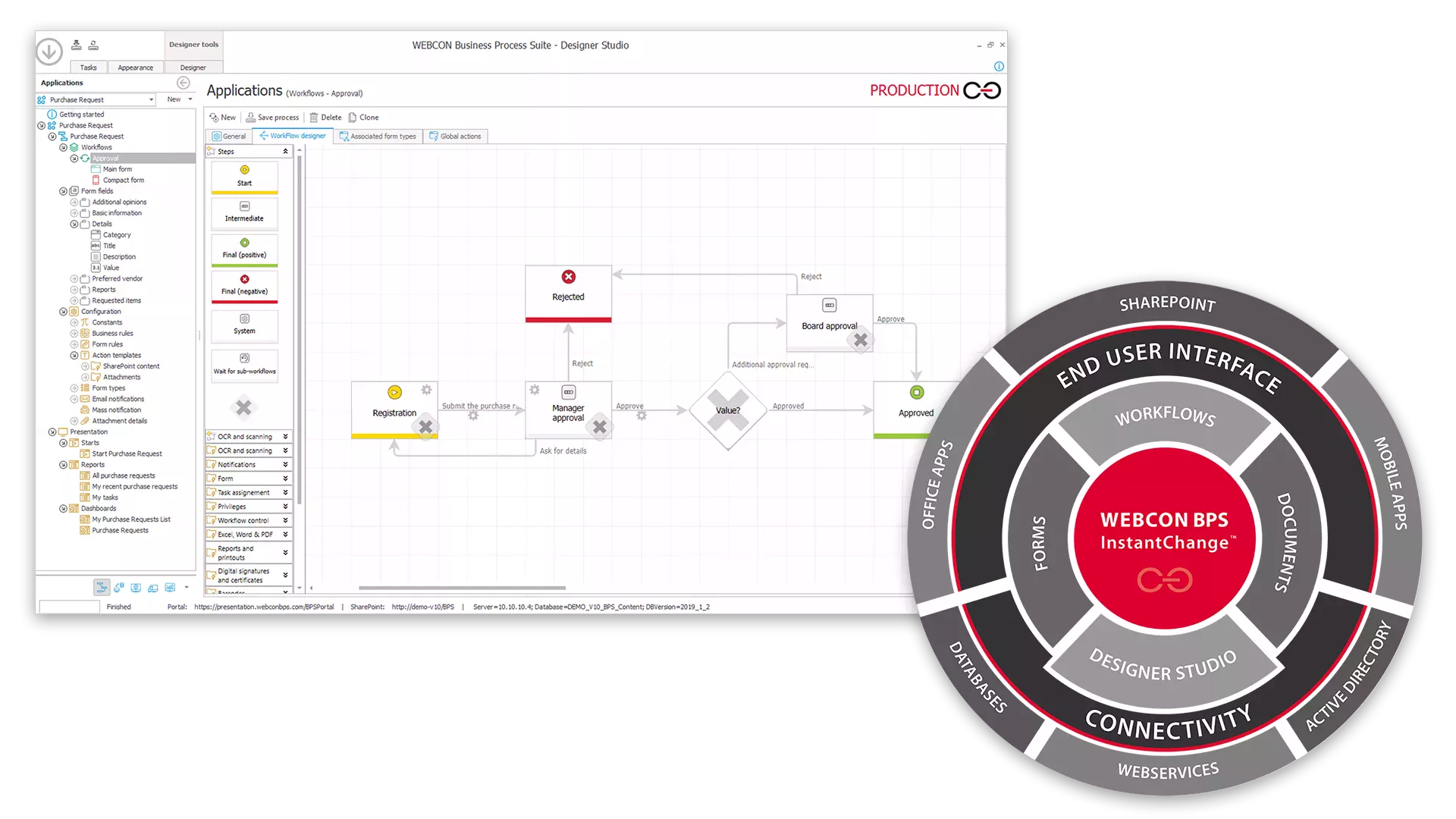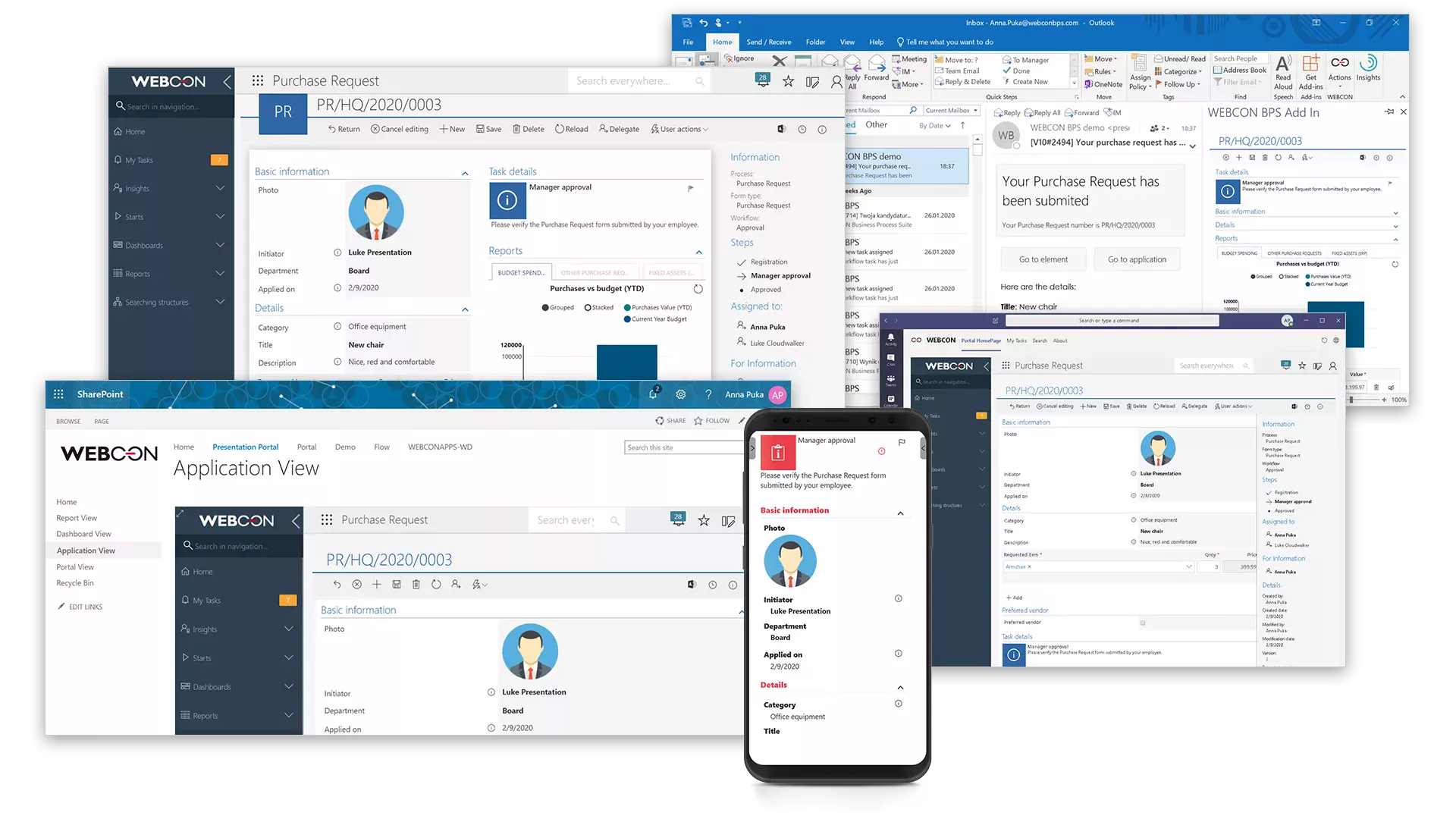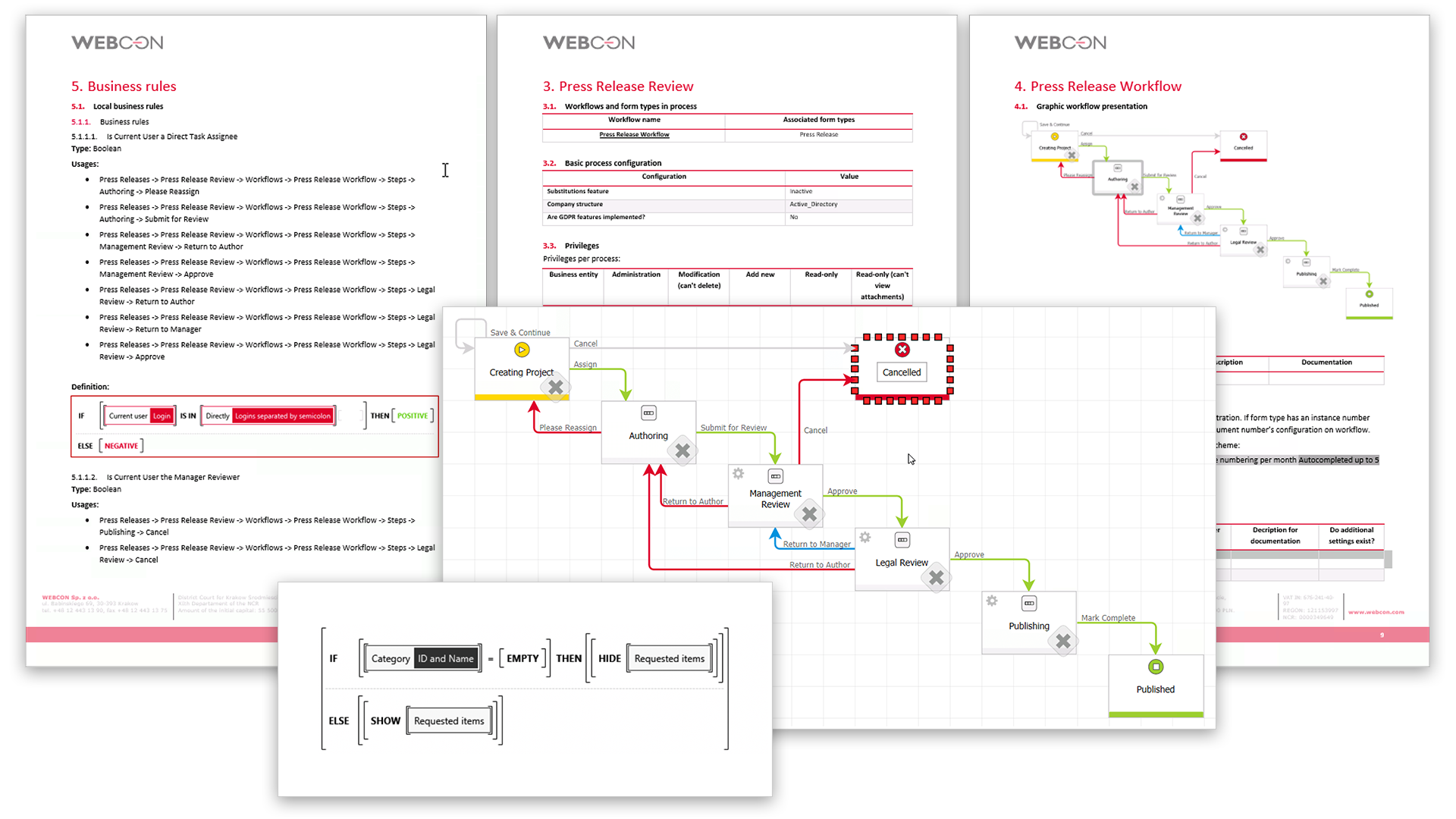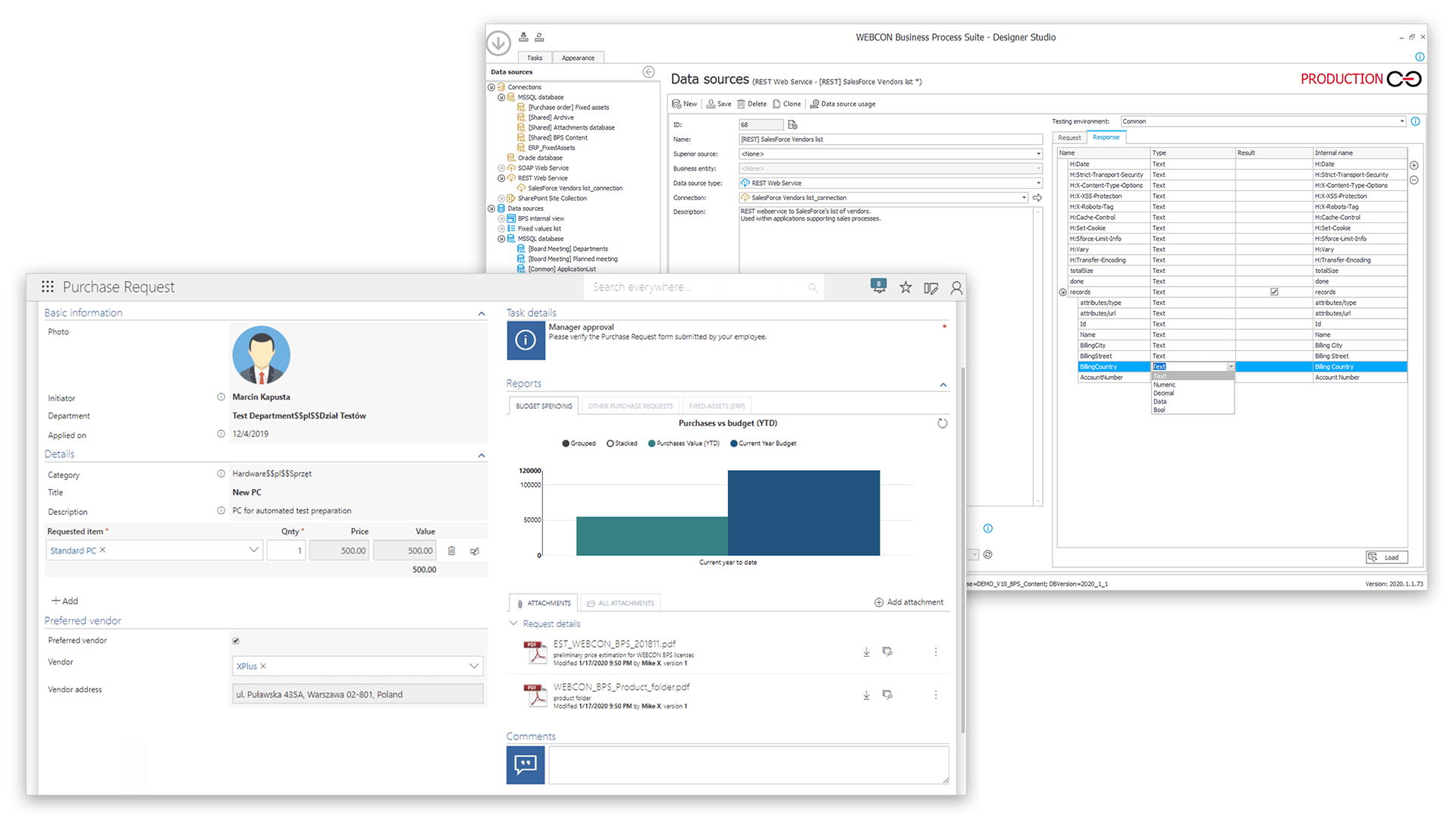- Platform
WEBCON BPS
Low-code Application Development Platform
- Solutions
- Why WEBCON
Why WEBCON?
Learn about key, powerful differentiators



Why we're better >
Alternative to >
Customer reviews >
Market reports >
- Pricing
- Resources
WEBCON Academy >
Discover our complex training program
Community >
Exchange experiences and ideas with WEBCON users from around the world
- About
Book a demo >
Schedule a meeting with our expert to explore WEBCON
Get a 30-day trial >
Try now for free & see if we're the right fit
Go freemium >
30 days won't cut it? Check out the freemium version
LOW-CODE DEVELOPMENT PLATFORM
Low-code, but better. You’ll find a seemingly endless number of options out there if you did a search on Low-Code Development Platforms (LCDP) or Low-Code Application Platforms (LCAP).
Here’s the place where we explain why our approach to overall low-code application development is better.
Find out how WEBCON BPS differs from other low-code platforms and why it matters to you so much.
Because the process isn’t an afterthought – it’s the cornerstone of any application
No one collects and maintains data without intending to use it for something. No one designs forms to be filled out and left alone. You do them for a reason. You do them to enhance, or improve, or manage, or optimize, or automate a process. Or all of that.
Too many low-code solutions have you start by modeling data – before you know what you’ll do with it. The forms will be more about editing data than performing tasks. There might be some reactive automation logic added to the application near the end.
If you build an application with WEBCON BPS low-code platform, you can start by modeling the process from end to end. Then you can figure out what data the process needs and model that. Then you can take the UI we’ll auto-build for you and customize it.
You can still build an application the other way, but why would you want to?


Siemens Finance


Südzucker Polska
Because no one gets it right the first time
There’s nothing wrong with this. Requirements might have been incomplete. Assumptions might have been incorrect. Or maybe you did everything right but a new need has come to light. Or business conditions changed. Or someone built a prototype and it’s up to you to make it production-ready.
Regardless of why, one thing is certain – you’re going to need to modify your applications. Possibly frequently. Not to worry.
WEBCON BPS low-code platform lets you change applications without disruption – even while they’re running. It’s called InstantChange™ (we trademarked it and everything) and it really works. You can change the process logic, the data schema, the form design – anything – and the update becomes immediately available to everyone using the application. People don’t have to restart their work to benefit from an application you just improved.
And if making changes and evolving applications is not burdensome anymore, just think how much more agile you can get?
Because you shouldn’t have to keep assets in sync manually
One reason people cringe at the thought of changing an application is because they think it’ll involve a lot of work and risk a lot of destabilization. It shouldn’t be that way.
If you change a step in a process, you shouldn’t have to edit your forms to change any buttons or menu options. If you alter a form field, the database and workflow logic and reports ought to just know about it, shouldn’t they? A change to one asset shouldn’t involve a lot of follow-on matching manual updates.
They certainly don’t with WEBCON BPS low-code platform. It’s all one application. The forms, the reports, the schema, the process logic – they’re all aware of each other at all times.
Because you can build your entire application in one place, using one tool
Too many low-code platforms offer what they call a “suite”, which is a fancy way of saying “use this tool for laying out forms, this other one for creating reports, this additional tool for modeling data, and yet another tool for designing your automation logic.”
WEBCON BPS low-code platform gives you a single designer studio where you build your entire solution, and every piece of the solution can be built, viewed, analyzed, and changed in one place.
Because using an application in five different places and five different ways shouldn’t mean five times the work
Let’s say you built a nice solution and five different departments want to use it. Too many tools would make you deploy a copy to each of their collaboration portals, or team workspaces.
Not WEBCON BPS low-code platform. We’ll let you deploy it once and surface it in each of those places. You can still keep them from seeing each other’s data, and you can still have settings that are unique to each place.
What you won’t have to do is maintain multiple copies, and write clever harvesting logic should you need to aggregate that data for company-wide analyses.
A WEBCON BPS application runs in a WEBCON BPS process portal, but it can also run in a SharePoint site, a Microsoft Teams workspace, inside of Microsoft Outlook, and on a mobile phone or tablet.
But you only have to build it once. It’ll dynamically adapt to wherever you want to surface it. It knows who you are and how you’re viewing it – and it dynamically adapts.
And that’s not just forms. It’s reports, dashboards, task lists – everything.
Because your work should be easy to understand, easy to reuse, and easy to analyze
Too many applications go undocumented; there’s not enough time, or not enough discipline, or something else – you name it. You won’t have that problem with WEBCON BPS low-code platform. Two clicks is all it takes to harvest an application’s metadata and produce IT-, admin-, and user-friendly application documentation.
The assets you create while building an application? Rules, application connections, data sources, forms, workflows, constants, field definitions, and more? They’re automatically catalogued. You can reuse them as much as you’d like (which we hope is a lot; who wants to redo work that’s already been done?), share them between applications, report on them, and more.
Building your first application with WEBCON BPS might take a little less time compared to many other platforms, but the second, third, fourth, and tenth applications? You’ll be done in significantly less time than most everyone else.
And analytics? They don’t require extra work. As you create your application, we automatically work out performance metrics to track and preserve (you can add more, too). You can get to those metrics from the user interface, the administration dashboard, or the designer studio. It comes in very handy when it comes time to make changes.
Because connecting to and automating other applications isn’t enough
Some low-code solutions take on the role of “glue”, or “integration”. That’s fine – we do that, too. But more often than not, you need to create an application that maintains its own data, requires its own user interface, and so on.
WEBCON BPS applications can be connected to just about anything, but your application is self-contained, deployable as a single package, versionable as a set, and governable from a single place.
Best of all? The items you work on are much more than simple data rows. They’re full-blown cases, with master data, detail data, document attachments, email attachments, comment threads, and a lot more. You can secure them, version them, archive them, and report on them as a coherent set.
What is low-code potential for enterprises and how can Low-Code Application Development Platforms change business?
With the growing need for application development and the scarcity of programmers, we have seen more and more no-code and low-code tools emerge to help businesses develop solutions with little or no need for coding. We can now develop websites, e-commerce tools, mobile apps, business process management tools and workflow automation tools without any coding.
How do digital transformation leaders use our enterprise low-code platform?
Our clients treat the WEBCON BPS low-code platform as their basic environment to create and run business applications. It is mainly the client who decides what specific applications do and how they work, and this largely depends on their industry and business model. This is universal: when a customer cannot find a ready-made (box) solution on the market or for some reason does not want to build a dedicated ‘module’ around another system (e.g. ERP) or develop a dedicated application, they can build such a solution on our low-code platform. These range from pretty simple, standard applications (such as a digital workflow for invoices or holiday requests) to highly advanced and complex systems (e.g. processing loan applications, the process of opening new showrooms and new market launches), often of key or even strategic importance for the business.
Can you develop business-critical applications with low-code platforms?
Yes. Low-code platforms for serious, corporate use offer levels of scalability, performance, security and documentation that would be very expensive and time-consuming to provide within a custom application coded from scratch. The platforms offer enterprise-level standards whether you want to build a simple prototype in a few hours or have a large team develop software for many days. Another reason why our clients transfer these critical tools to our low-code platform is the option to add new functionalities and modify their operation in a quick (affordable!), easy and safe way. The slow response to changing requirements is a weakness of many low-code solutions, yet we have addressed this problem with our unique InstantChange™ technology.
Can you really build applications without coding?
Yes, you can. Basic apps for simple business scenarios can be built even with no-code tools such as Excel (which allows VBA scripts to be added). With the WEBCON BPS low-code development platform, the use of .NET code is needed only in extremely rare cases. However, code elements are often key to delivering projects with the same platform regardless of the complexity of business requirements. This helps IT departments deliver the vast majority of business applications (about 90% according to our customers) with a single application platform, one set of competencies, one infrastructure and within one end-user interface.
What new possibilities come with low-code?
Above all, low-code lets you quickly build applications in the Minimum Viable Product model. The Rapid Prototyping concept is becoming increasingly popular with our customers. You can build prototypes with low-code, and if they work well, there is no need to ‘rewrite’ them into final products. A good low-code development platform enables iterative development and cuts the workload for change management to a minimum. New business applications can be developed even when requirements are not yet fully specified or will see dynamic changes. The IT department would rather not undertake such projects without having highly flexible tools like these.
What are the long-term benefits behind low-code development platforms?
Businesses and management have changed their view of IT departments and CIOs. Projects are now launched almost immediately (without the phases of supplier selection, bidding, contract negotiations, etc.), are created in DevOps teams, with significant, direct involvement of the business and end-users, quickly implemented in the production environment, and changes and modifications are notified in a timely manner. IT has thus become a valued business partner and the driving force behind the digital transformation.
So yes – better
WEBCON BPS approaches low-code development from a process-first and change-friendly point of view – and we think it makes all the difference.
We think even seemingly static data has a lifecycle, and that it’s often more than create/update/delete. Processes are everywhere, and we make them painless.
Would you like to see how we do forms, but better? Check out >
How about how we do workflow automation, but better? Check out >
At WEBCON, digital transformation isn’t a buzzword – it’s a way of life; it’s about reducing steps, eliminating mistakes, ensuring compliance, connecting assets, and encouraging continuous improvement. Applications made with WEBCON BPS are scalable, process-centric, low-to-no-code, equally at home online or on-premises, and happily used on both desktops and mobile devices. WEBCON’s unique InstantChange™ technology lets customers adapt/evolve processes to address changing needs immediately and painlessly. WEBCON processes are clearly understood and easily governed, and they can be connected to line of business systems, documents, forms, messages, and collaboration workspaces.
Contact us
WEBCON North America
WEBCON Europe
Privacy Policy | © WEBCON 2022 All rights reserved.
At WEBCON, digital transformation isn’t a buzzword – it’s a way of life; it’s about reducing steps, eliminating mistakes, ensuring compliance, connecting assets, and encouraging continuous improvement. Applications made with WEBCON BPS are scalable, process-centric, low-to-no-code, equally at home online or on-premises, and happily used on both desktops and mobile devices. WEBCON’s unique InstantChange™ technology lets customers adapt/evolve processes to address changing needs immediately and painlessly. WEBCON processes are clearly understood and easily governed, and they can be connected to line of business systems, documents, forms, messages, and collaboration workspaces.
Contact us
WEBCON North America
WEBCON Europe
Privacy Policy | © WEBCON 2022 All rights reserved.



